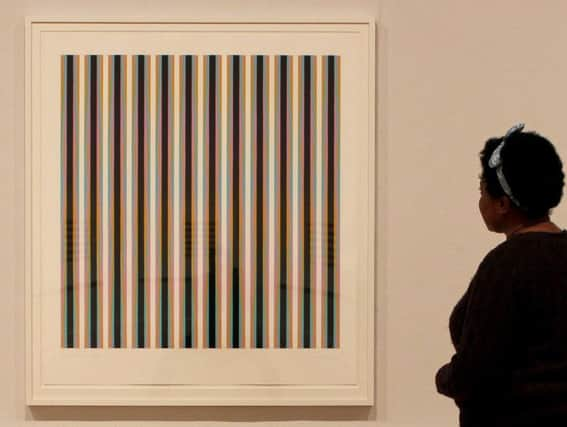Preview: Bridget Riley exhibition


A hugely significant figure in 20th century abstract art and still working at the age of 84, Bridget Riley is probably best known for her striking monochrome op art paintings of the early 1960s but a new show at Sheffield’s Graves Gallery explores a key period which represented a major shift in her development as an artist.
Bridget Riley: Venice and Beyond Paintings 1967-1972, curated by Riley and her gallerist especially for Sheffield, pinpoints this period with a selection of carefully chosen pieces. “This exhibition focuses on the beginnings of her use of colour and because it has been created especially for us it feels really exciting to have it here,” says Louisa Briggs, exhibitions and display curator at Museums Sheffield. This significant moment of change in Riley’s artistic practice coincided with her work being shown at the Venice Biennale where she became the first British artist to win the International Prize for Painting. One of her works Rise 1 is a highlight of Sheffield’s permanent collection and this piece was the starting point for the current show. Created in 1968, the year after Riley first started to use colour, it is a seminal piece and the idea of exhibition was to put it in its context. “She sees it as a pivotal painting,” says Briggs. “It is a favourite with our visitors and it will be interesting for them to see it among other works she created at the same time.”
Advertisement
Hide AdAdvertisement
Hide AdRiley had always been interested in colour – an important early influence was the work of French post-Impressionist painter Georges Seurat – but had struggled to get to grips with it and abandoned it in favour of black and white. Her later adoption of it added a rich new dimension to her works of optical experimentation.
“One of the reasons it was a big challenge is that colour is unstable,” says Briggs. “The way I see a certain colour might be different from the way someone else sees it, and the way red appears next to a green is different to how it appears next to blue or white. She used the stripe because it felt like a natural structure but it also allowed the most opportunity for two colours to interact. In the show there are also examples of twists of colour in the stripe. With all her paintings the longer you look at them, the more you see.”
Works on display in the show alongside Rise 1 include Late Morning 1 (1967), Little Diamond (1972) and Vapour (1970) plus 13 works on paper, with a room of her finished paintings and another of studies Riley created when she began her experiments with colour, which gives the viewer a satisfying sense of progression.
Also included in the exhibition is a series of analysis sheets that Riley produced specially for Sheffield, the only time she has every done it, in the 1980s when the then curator Julian Spalding was looking to acquire Rise 1 for the collection. “In them she was retracing her steps in creating the painting,” says Briggs. “She talks about the time she spent working out how the colours worked together, the experimentation she went through and how she got the rising effect.” Spalding took the analysis with him when he went to speak to Sheffield Council and the painting was eventually acquired in 1985. “It was a really generous act. I think one of the things she liked about Sheffield was that Julian Spalding was interested in approaching art in a very inclusive and democratic way – he felt that art was for everybody.”
Graves Gallery, Sheffield until June 25. Entry is free.